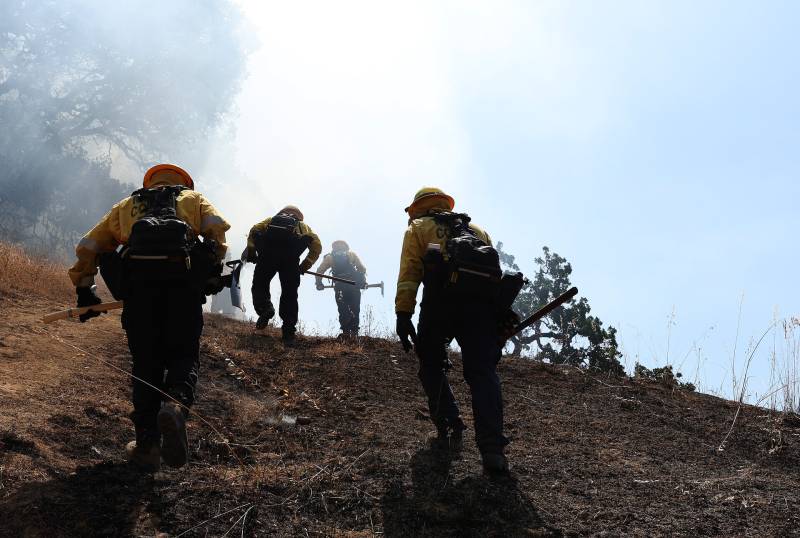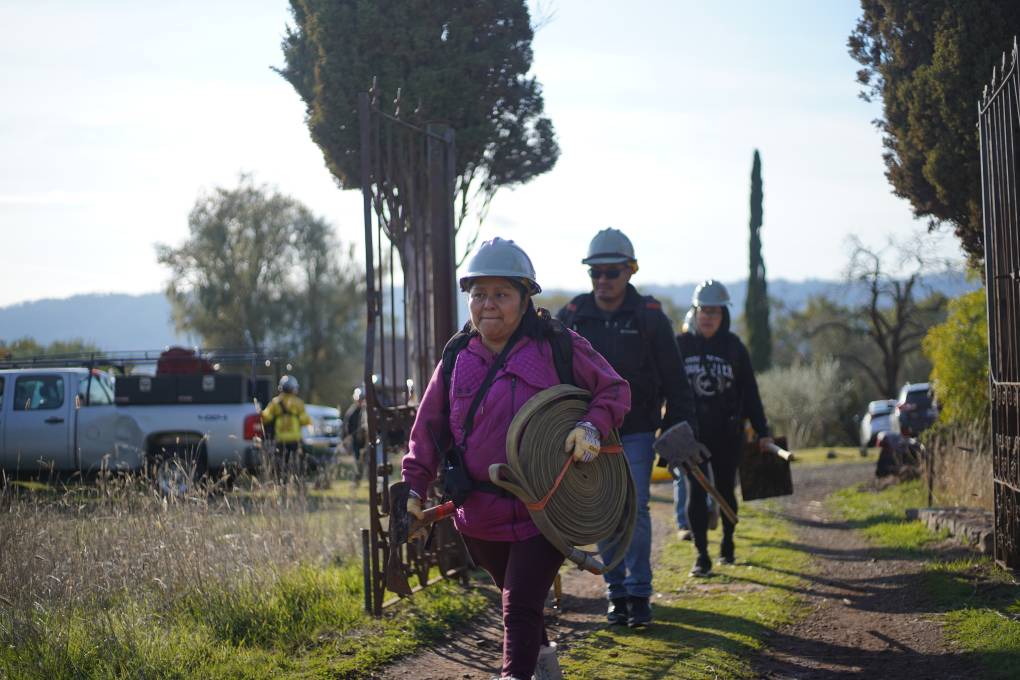While the climate models may have shown wide open windows for controlled burns, Bratcher said the rainy, wet winter and spring months made it difficult to light fires.
“We lost a lot of burn days because it was just too wet,” he said.
All that rain did tamp down California’s wildfire season this year. The state experienced far fewer and less destructive fires. Lightning touched off some of the biggest ones that burned across remote areas in Northern California.
Due to safe weather conditions and their remoteness, forest managers and tribes allowed them to burn.
“These fires have been doing really important work,” said Tony Marks-Block, ecological anthropologist at CSU East Bay, adding that these types of ecologically beneficial fire have been largely eliminated by fire suppression since last century. “In future years when lightning strikes again, or there’s an accidental fire initiated by a person, that fire will not be as extreme because there’s less fuel to burn.”
Smoke from those fires did drift down and dirty the air across the Bay Area for several days in September. Marks-Block said these kinds of low severity fires can produce poor air quality but “they reduce the likelihood of future catastrophic fire events and longer periods of poor air quality.”
Californians might need to get used to shorter periods of semi-regular, smoky conditions to avoid weeks-long stretches of choking, hazardous air like the Bay Area lived through during the firestorms of 2020.
Going forward, Cal Fire’s Bratcher said the agency may have to rely more on managing the forest by hand during wet years like this one, using chainsaws and wood chippers.
“The landscape will dictate what tools in the toolbox we can use,” he said.
While prescribed burning is one of the best ways to manage the forests, they can’t rely on it exclusively.

